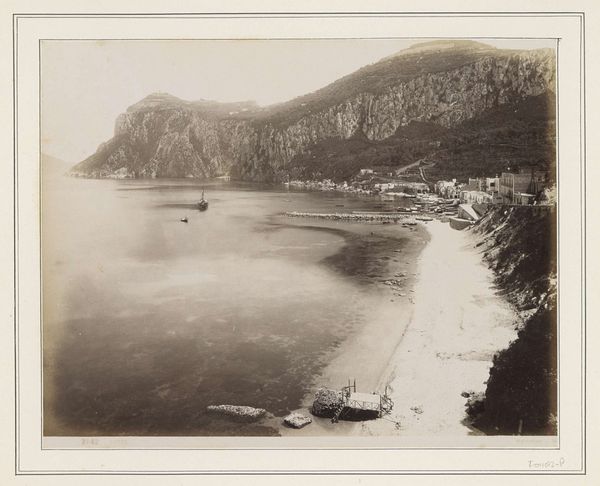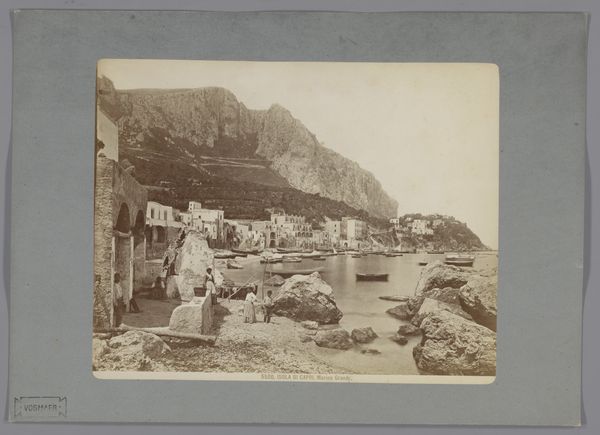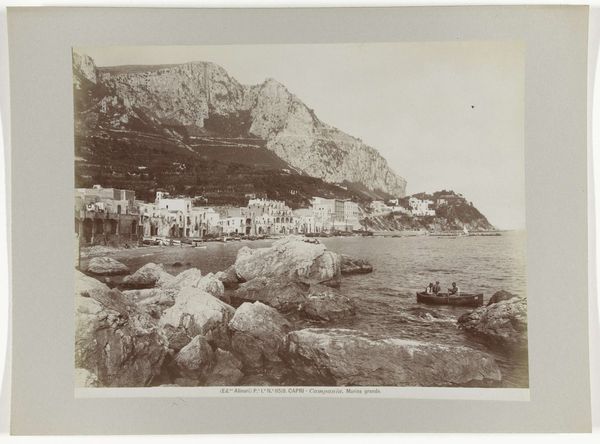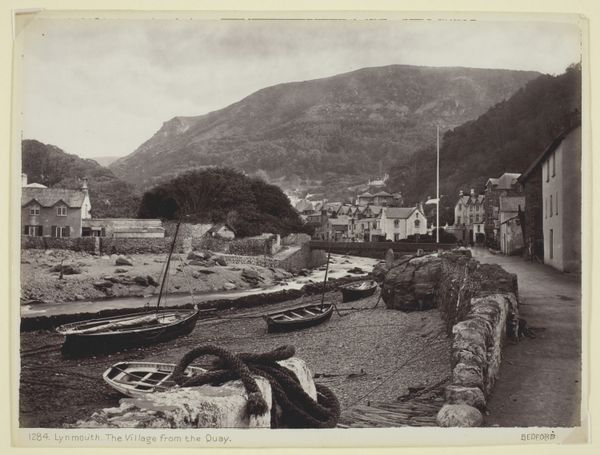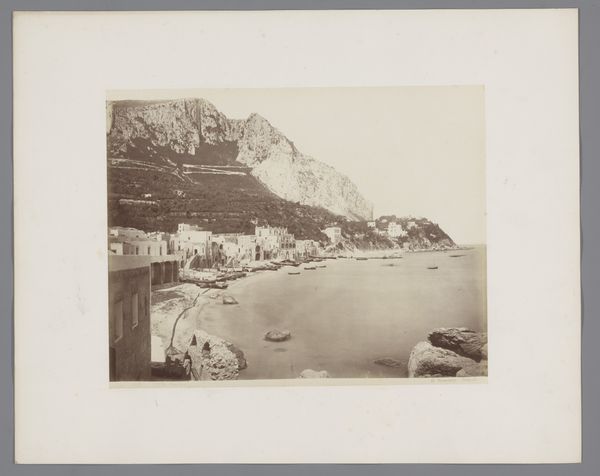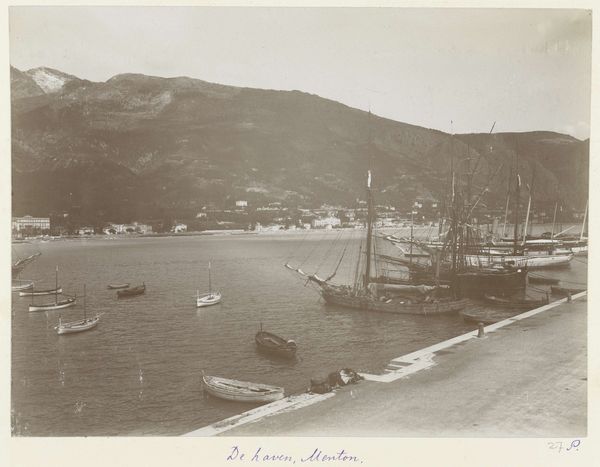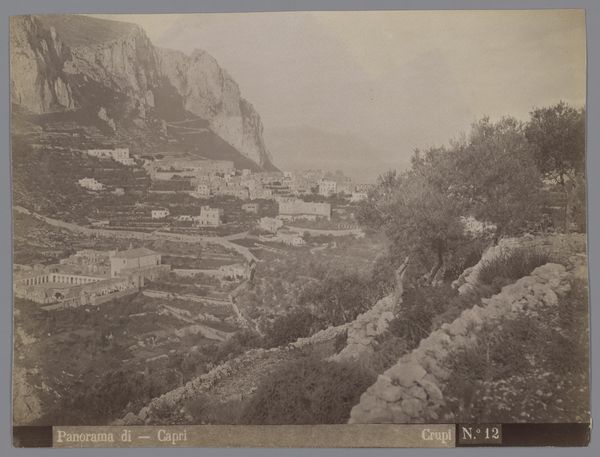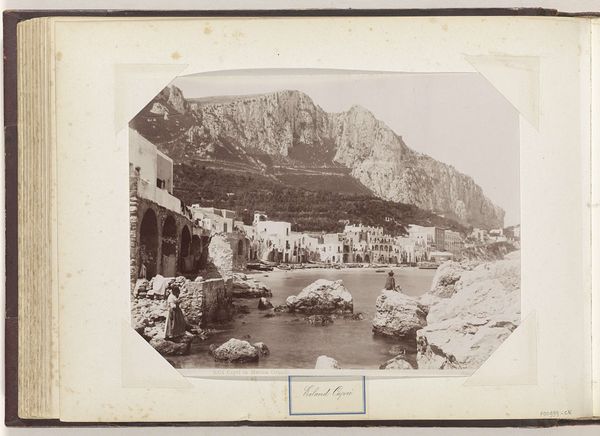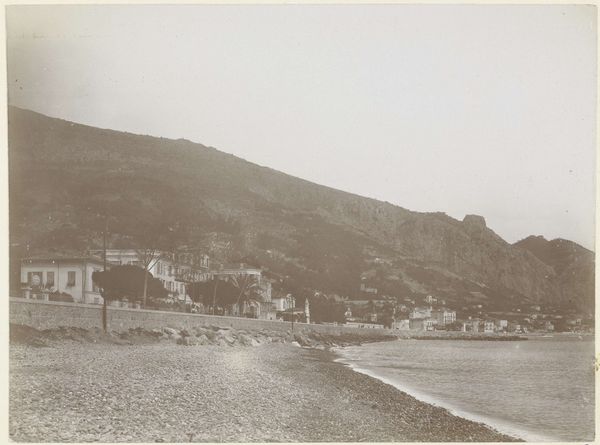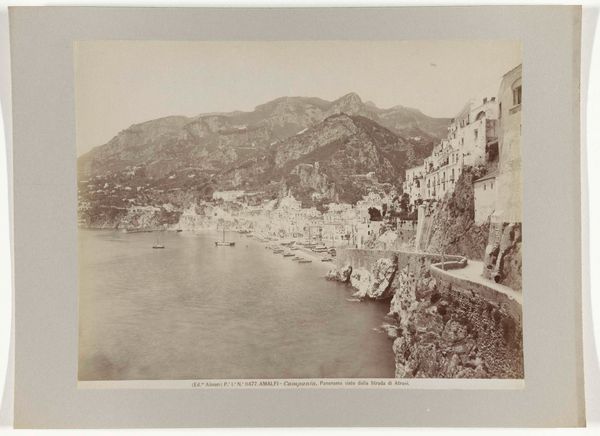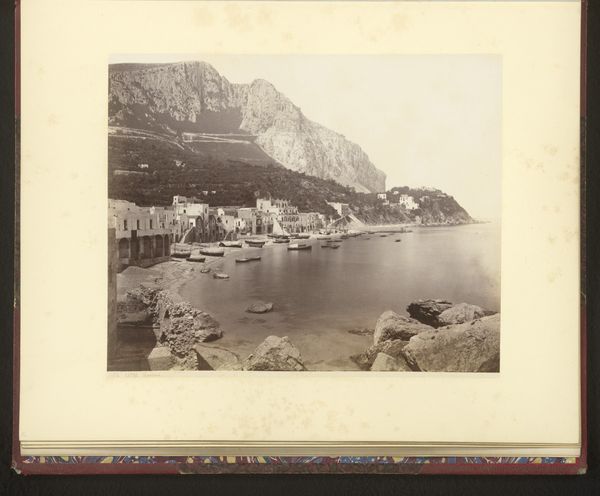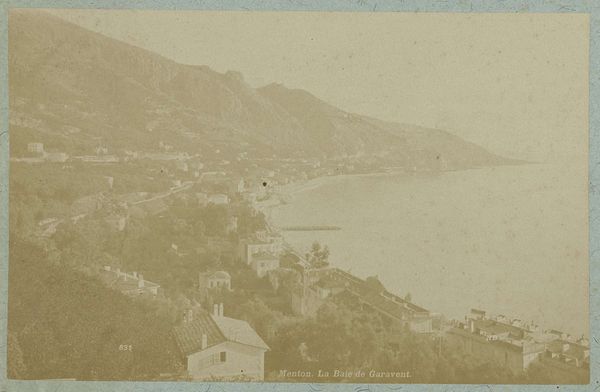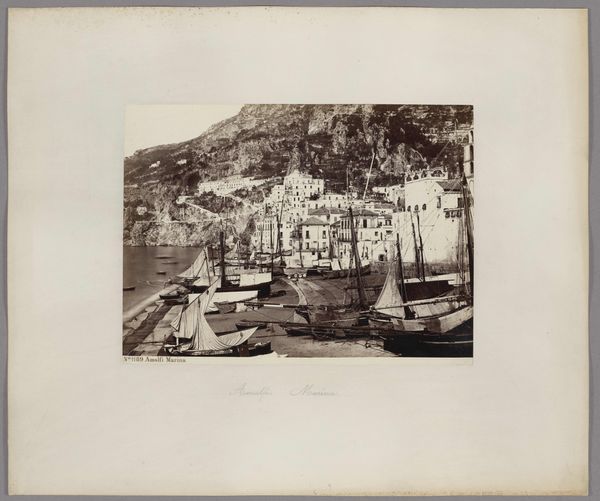
print, photography, gelatin-silver-print
#
pictorialism
# print
#
landscape
#
photography
#
orientalism
#
gelatin-silver-print
#
cityscape
Dimensions: height 199 mm, width 253 mm
Copyright: Rijks Museum: Open Domain
Curator: Immediately, I'm struck by the hazy, almost dreamlike quality of this image. There's a stillness, a tranquility, despite the implied industry of the harbor. Editor: What you're responding to is likely Sommer's manipulation of the gelatin-silver print process, a hallmark of pictorialism. This is "Haven van Amalfi," or "Port of Amalfi," created sometime between 1857 and 1914 by Giorgio Sommer. Curator: Right, pictorialism. The way the focus softens, it almost feels like a painting rather than a straight photograph. I wonder, what audience was he picturing when crafting this somewhat romanticized portrayal? Was it intended for the consumption of a European gaze already predisposed to 'exotic' Southern European locales? Editor: It's certainly something to consider, as this work has also been classified as Orientalist. Sommer’s work catered to the Grand Tour travelers seeking visual souvenirs of their journeys, but let’s dig into the visual structure a little more. Notice how the composition guides the eye upwards, starting from the working boats in the harbor, all the way up to the stacked architecture climbing the imposing cliffs. It subtly depicts the labor of the port city nestled in this landscape. Curator: That steep incline emphasizes the integration of the human settlement with its natural setting, even if it is through this filtered, softened lens. I question the degree to which photographic techniques like soft focus inadvertently glossed over potential realities concerning the laborers working on the harbor in this busy port. Editor: Sommer’s photography offers insights into the socio-economic landscape of Southern Italy in the late 19th century. The success of his studio was inextricably linked to tourism and to broader cultural phenomena involving the consumption of the "exotic." Curator: Examining Sommer's works urges us to consider whose stories are visually archived and the circumstances under which those images are circulated and viewed. The "Port of Amalfi" serves both as a portrait and a proposition. Editor: Absolutely, it becomes another tile in the historical and artistic mosaics of Italy, shaped by artistic license, patron aspirations and the complicated matrix of art commerce.
Comments
No comments
Be the first to comment and join the conversation on the ultimate creative platform.
